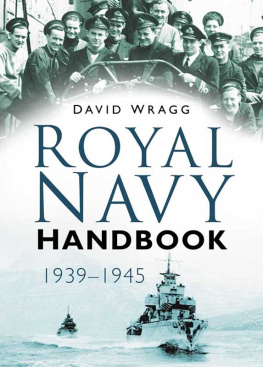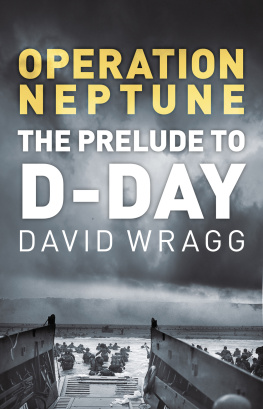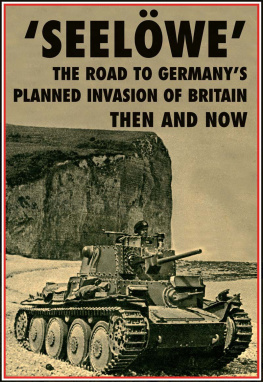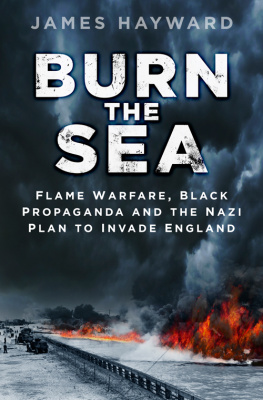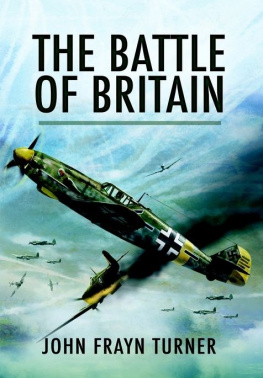Pagebreaks of the print version

Operation Sealion
Operation Sealion
Hitlers Invasion Plan for Britain
David Wragg
First published in Great Britain in 2018 by
Pen & Sword Military
An imprint of
Pen & Sword Books Ltd
47 Church Street
Barnsley
South Yorkshire
S70 2AS
Copyright David Wragg 2018
ISBN 978 1 47386 738 3
eISBN 978 1 47386 740 6
Mobi ISBN 978 1 47386 739 0
The right of David Wragg to be identified as Author of this work has been asserted by him in accordance with the Copyright, Designs and Patents Act 1988.
A CIP catalogue record for this book is
available from the British Library.
All rights reserved. No part of this book may be reproduced or transmitted in any form or by any means, electronic or mechanical including photocopying, recording or by any information storage and retrieval system, without permission from the Publisher in writing.
Pen & Sword Books Limited incorporates the imprints of Atlas, Archaeology, Aviation, Discovery, Family History, Fiction, History, Maritime, Military, Military Classics, Politics, Select, Transport, True Crime, Air World, Frontline Publishing, Leo Cooper, Remember When, Seaforth Publishing, The Praetorian Press, Wharncliffe Local History, Wharncliffe Transport, Wharncliffe True Crime and White Owl.
For a complete list of Pen & Sword titles please contact
PEN & SWORD BOOKS LIMITED
47 Church Street, Barnsley, South Yorkshire, S70 2AS, England
E-mail:
Website: www.pen-and-sword.co.uk
Acknowledgements
I n writing any book, an author is grateful for the help and assistance of many others, and especially those who have placed on record their wartime achievements, many of them in the invaluable Imperial War Museum Sound Archive. No work on something as vast as our wartime navy can cover every inch of ground, and for those whose appetite has been whetted by this book, I hope that the bibliography at the back is helpful. This book concentrates mainly on the German plans to invade the south of England in autumn 1940, after the fall of France and when the British Empire was all that stood between the and their domination of Europe.
David Wragg
Edinburgh
August 2017
Introduction
T he British Isles had not been invaded since 1066, but in the summer of 1940, Nazi Germany seemed unstoppable. The German army and air force had swept through Poland, paused for the winter, and then invaded Denmark and Norway, in the latter case landing from the sea and the air, before turning their attention to Belgium, the Netherlands and then France. Even before the Second World War had started, Germany had annexed Austria and taken Czechoslovakia. Hitler had secured his eastern flank through an alliance with the Soviet Union that not only provided security, but fuel, food and raw materials so that a British blockade would not have the same devastating effects that Germany had experienced during the First World War. Germany after all had far more modern means at its disposal for an invasion than had William of Normandy in 1066.
The Mediterranean was closed to merchant shipping other than in convoy and the Suez Canal then became part of a roundabout route from the UK to Egypt and Cyprus via the Cape of Good Hope, the Indian Ocean and the Red Sea. In the Mediterranean and North Africa, Italys belated entry into the war as an ally of Germany threatened the British colony and base of Malta and the Suez Canal, the vital link to the Persian Gulf, as it was then known, and India, Australia and the Far East.
As the British adjusted to this new state of affairs, realising that they were on their own and being thankful that at least most of the personnel of the had been recovered, albeit without their transport and heavy equipment, a new threat emerged: invasion. Aerial reconnaissance discovered invasion barges being gathered in the French and Belgian channel ports. While the RAF bombed the barges, efforts were made to improve the equipment of the Irish Free States armed forces in case a German invasion came via Ireland, thinly populated and weakly defended.
These were preparations for the invasion of England, a plan known to the Germans as .
Just how realistic was the German threat of invasion?
Maps
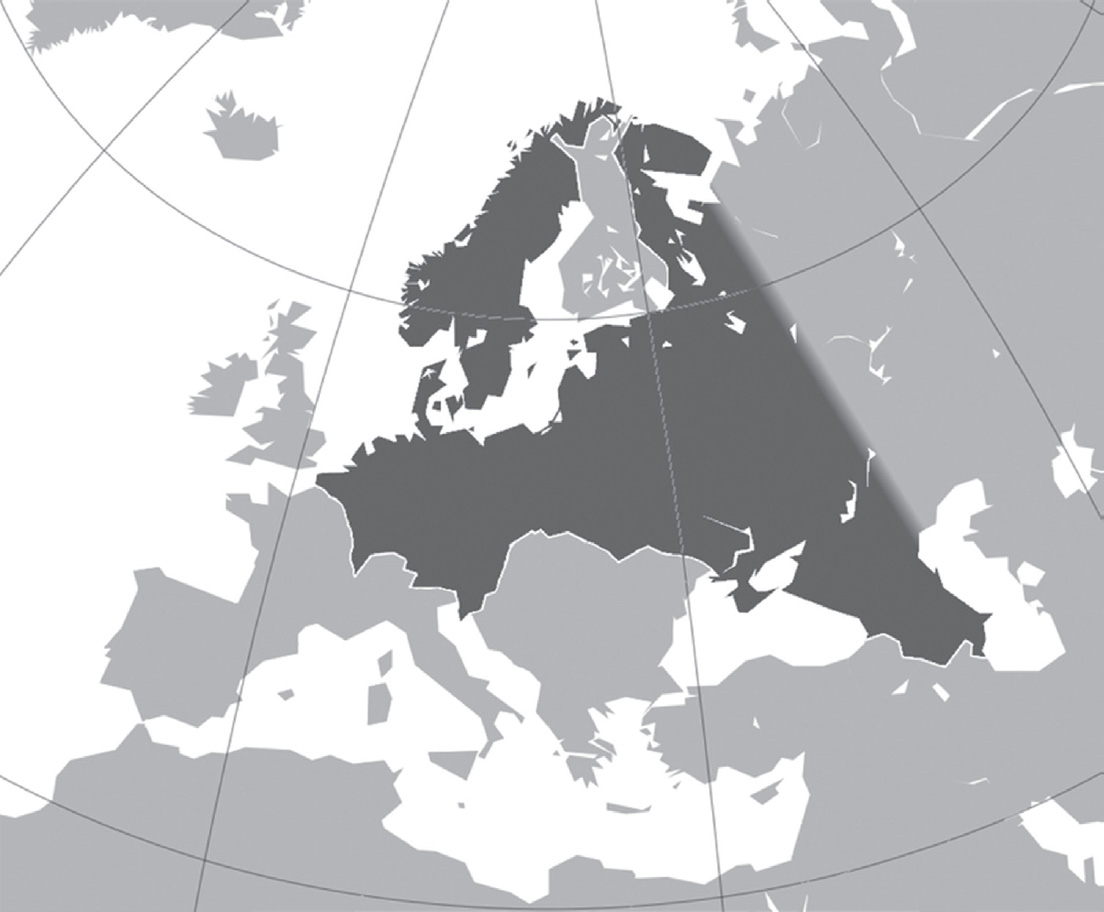
MAP 1: Hitlers plan for a Greater Germany designed to provide the Lebensraum or living space that he felt the country needed. Norway, Denmark and the Netherlands were seen as countries that had Aryan populations. On the fringes and in the east, those who also had this characteristic would be welcomed, while others would be moved further east into inhospitable territory.
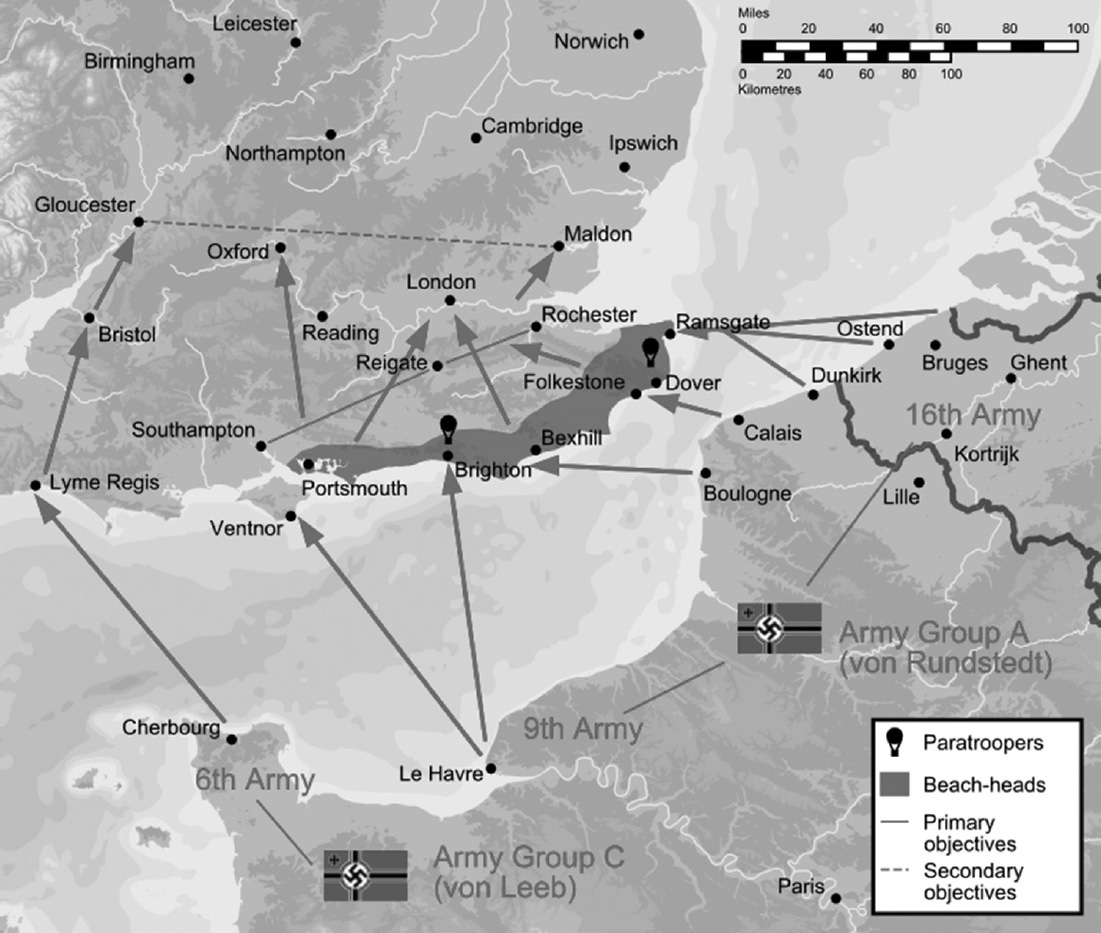
MAP 2: An early proposal for an invasion along a wide front from Lyme Regis in the west to Ramsgate, with the main beachheads between Portsmouth and Ramsgate. The opposed the alternative assault through East Anglia. In the end, it was decided that the landing zones would be between Brighton in the west and Hythe in the east, some miles west of Dover and without high cliffs, but with terrain much of which was marshy.
Chapter One
The Unstoppable Hun
O n the night of 15/16 September 1940, Guy Gibson, later to be the most famous of the Royal Air Forces bomber pilots, was flying a Handley-Page Hampden bomber over the port of Antwerp in German-occupied Belgium. It was the biggest raid on the port at that early stage of the war.
It was the night of the full moon; many barges were sunk, many blew up, destroying others around them, recalled Gibson. They were full of stuff and we could see, there and then, there was no doubt about it, the Germans were ready.
Flying low over the docks that night we could easily see the tanks on board, the guns on mountings at the stern of each invasion craft, the tarpaulins over sinister objects on the docks. Der Tag
What had brought the RAF to bomb barges in a Belgian port? Indeed, why were barges being gathered in northern France and Belgium?
France had fallen on 21 June, less than six weeks after the German invasion had begun after nightfall on 12 May. The evacuation of the British army, as well as many French soldiers, from Dunkirk had been completed on 3 June, leaving most of their equipment behind them.
France and the United Kingdom had declared war on Germany on 3 September 1939, after Germany had ignored an Anglo-French ultimatum for Germany to withdraw from Poland, which been invaded two days earlier. It seems that the Germans did not expect the United Kingdom and France to act upon their ultimatum, indeed both the head of the German Navy, or Kriegsmarine , Erich Raeder, and his was well-placed to intervene in Poland, with Germany, the most populous and largest country in Western Europe, sitting firmly between France and Poland, and able to control the natural approaches to the Baltic, the Skagerrak and Kattegat.
It was not just this, for during the intervening period, Germany had completed the occupation of Czechoslovakia with little fuss. Germany had earlier, in March 1938, absorbed Austria into the Third , but not without the support of many of that countrys population. Germany and what had been at the time the Austro-Hungarian Empire had been allies in the First World War. Post-war, plans to call Austria Deutschsterreichische were banned by the Allied Control Commission, determined not to see the creation of what might be called a greater Germany from the ruins of what had been the costliest and bloodiest war in history. Nevertheless, the dream of a united German people lived on, with many yearning for an Anschluss , or joining together of the two countries.


